Inside the Leirhnjúkur crater, Iceland, July 2025
Bjarnarflag Geothermal Power Station, July 2025
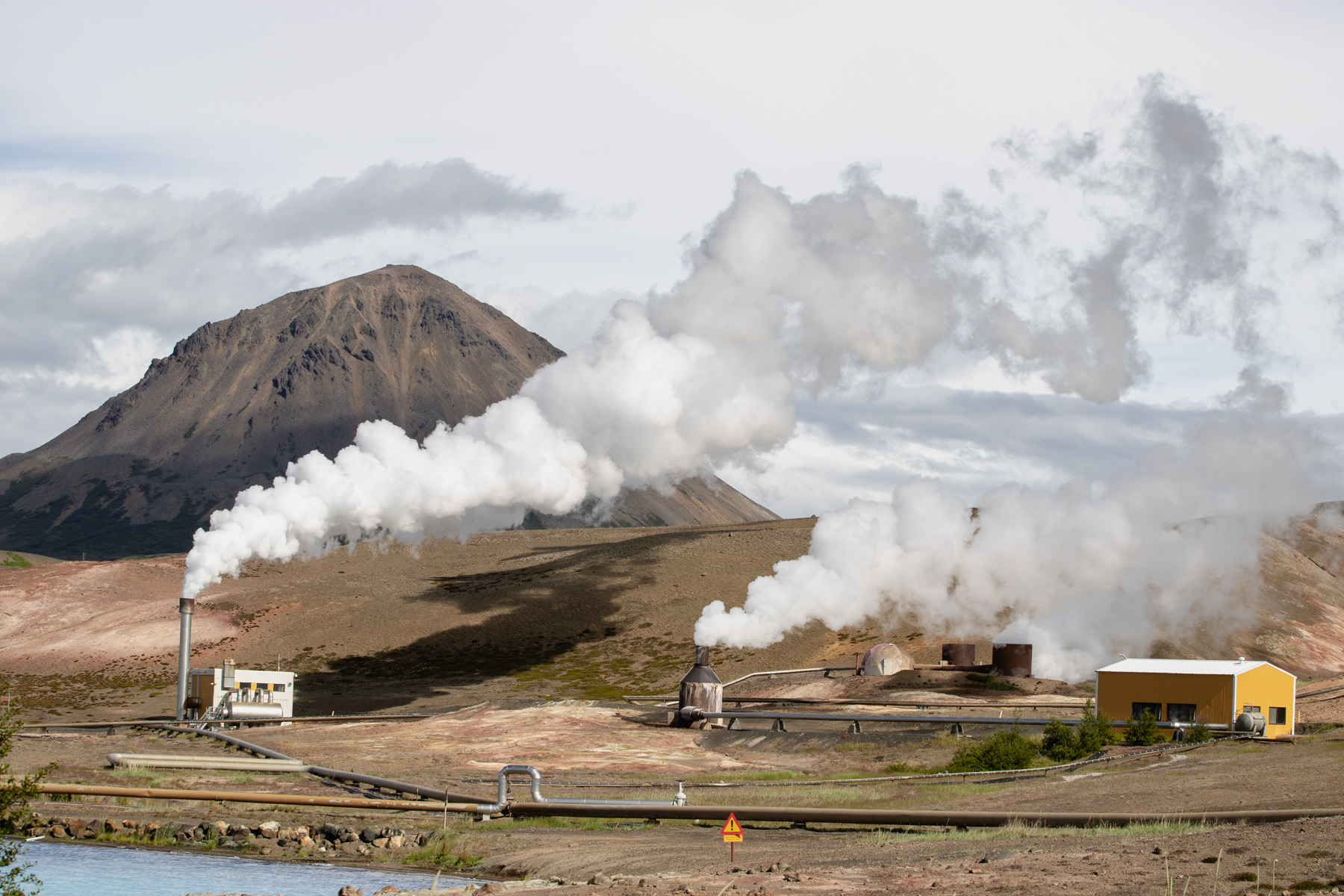
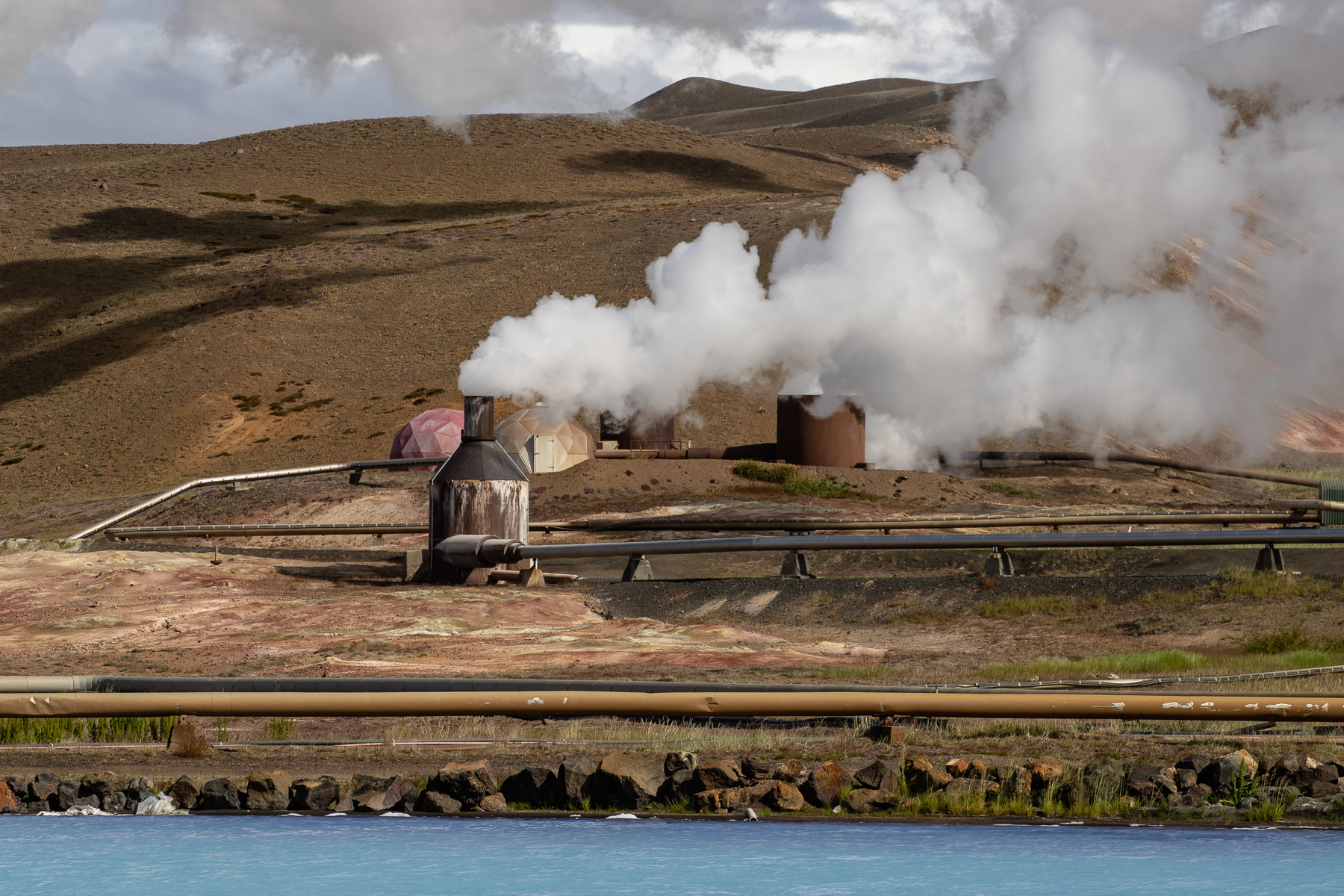
Hiking through the Leirhnjúkur crater.


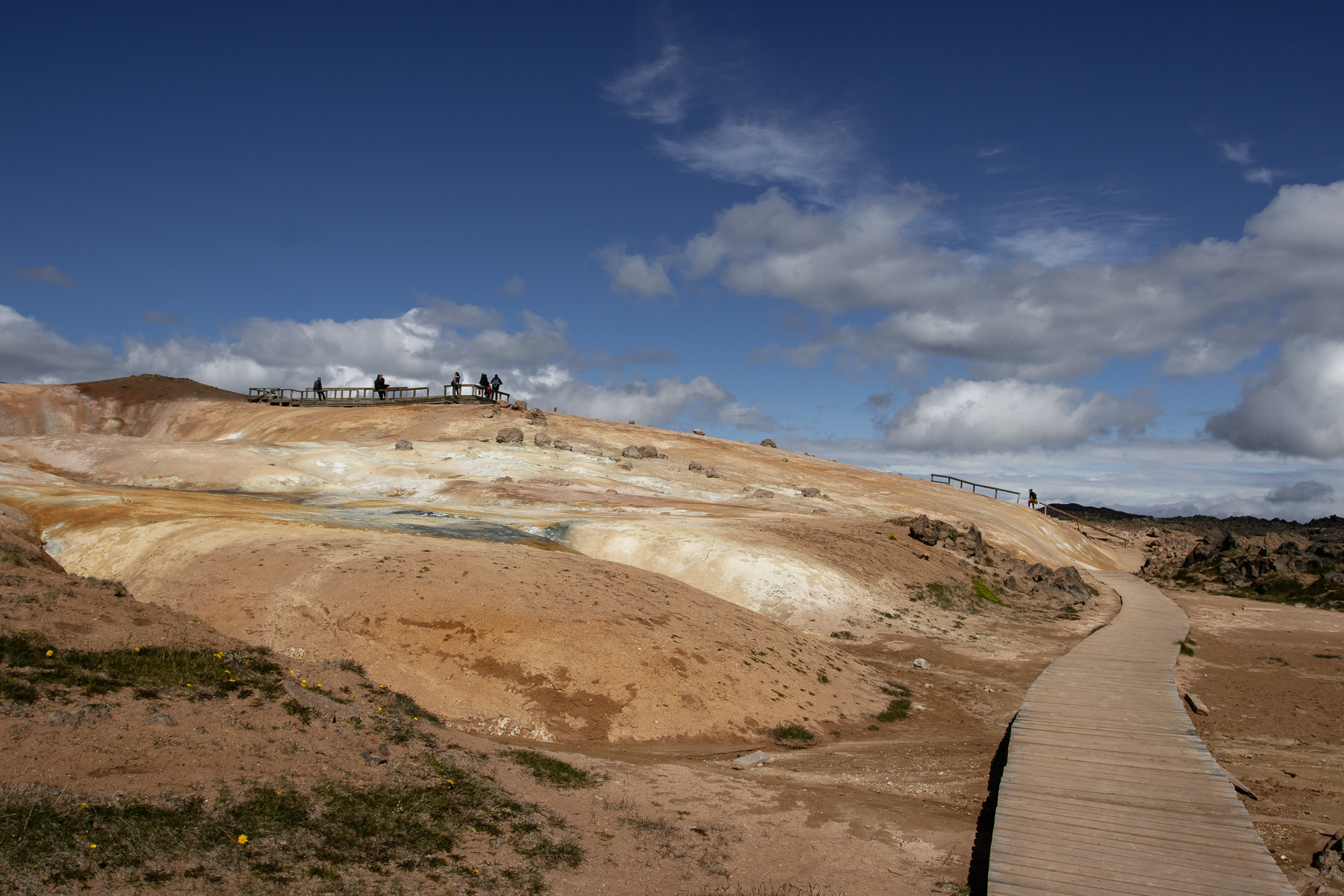



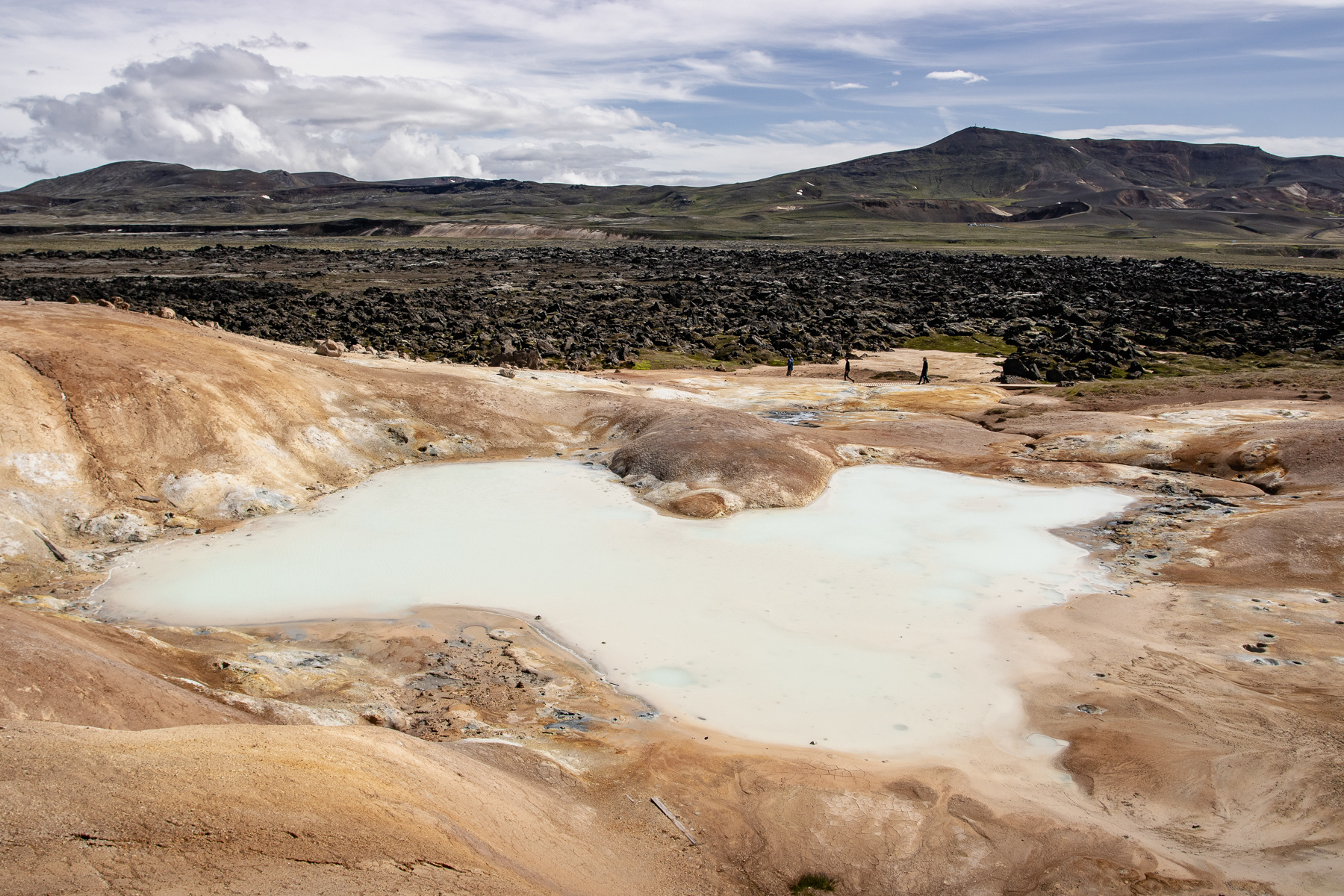



One of the lower hills inside the Leirhnjúkur crater.
Steaming vents inside the Leirhnjúkur crater.
The hill nicknamed "clay mountain" inside the Steaming vents Steaming vents inside the Leirhnjúkur crater. Notice the two humans in front for perspective.





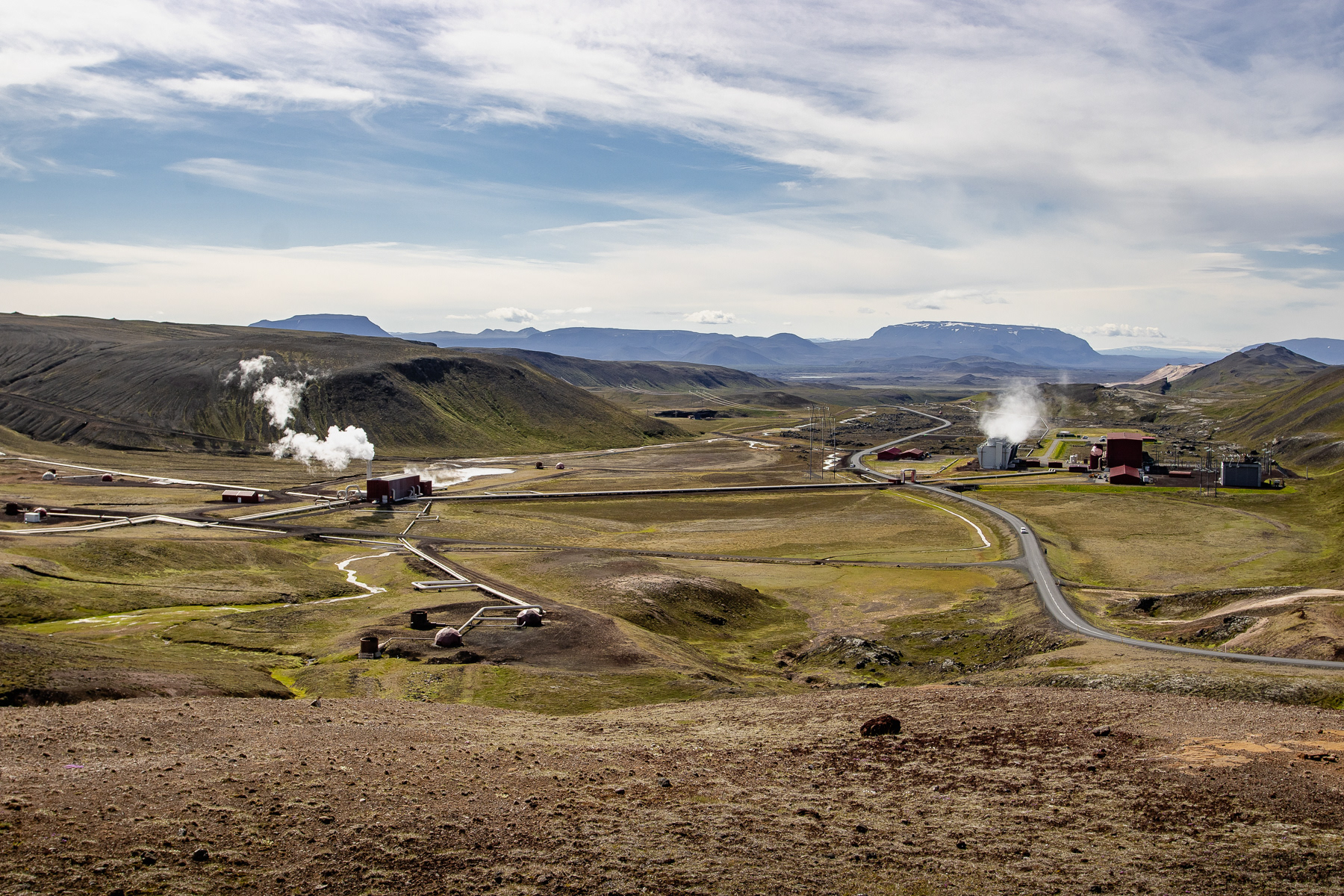
A geodesic dome over a wellhead at Krafla. It protects the wellhead. They can be found all over the place and are based on a design by Einar Þorsteinn Ásgeirsson (Einar Thorsteinn), an architect who designed structures especially for the rough Icelandic landscape and climate. The first dome was constructed in 1981, in the Krafla area. Back then it was made of fibreglass, but nowadays, the domes are of aluminium - as it is strong, light and can resist extreme temperatures well.
The blue-water Krafla crater lake, with car park for perspective, against the backdrop of the vast Leirhnjúkur crater.
The road down to Hverir.
Smoking vents, bubbling mud pools and lower hills at Hverir.

All health issues ignored, these tourists dive into the geothermal smoke for a photo opp.
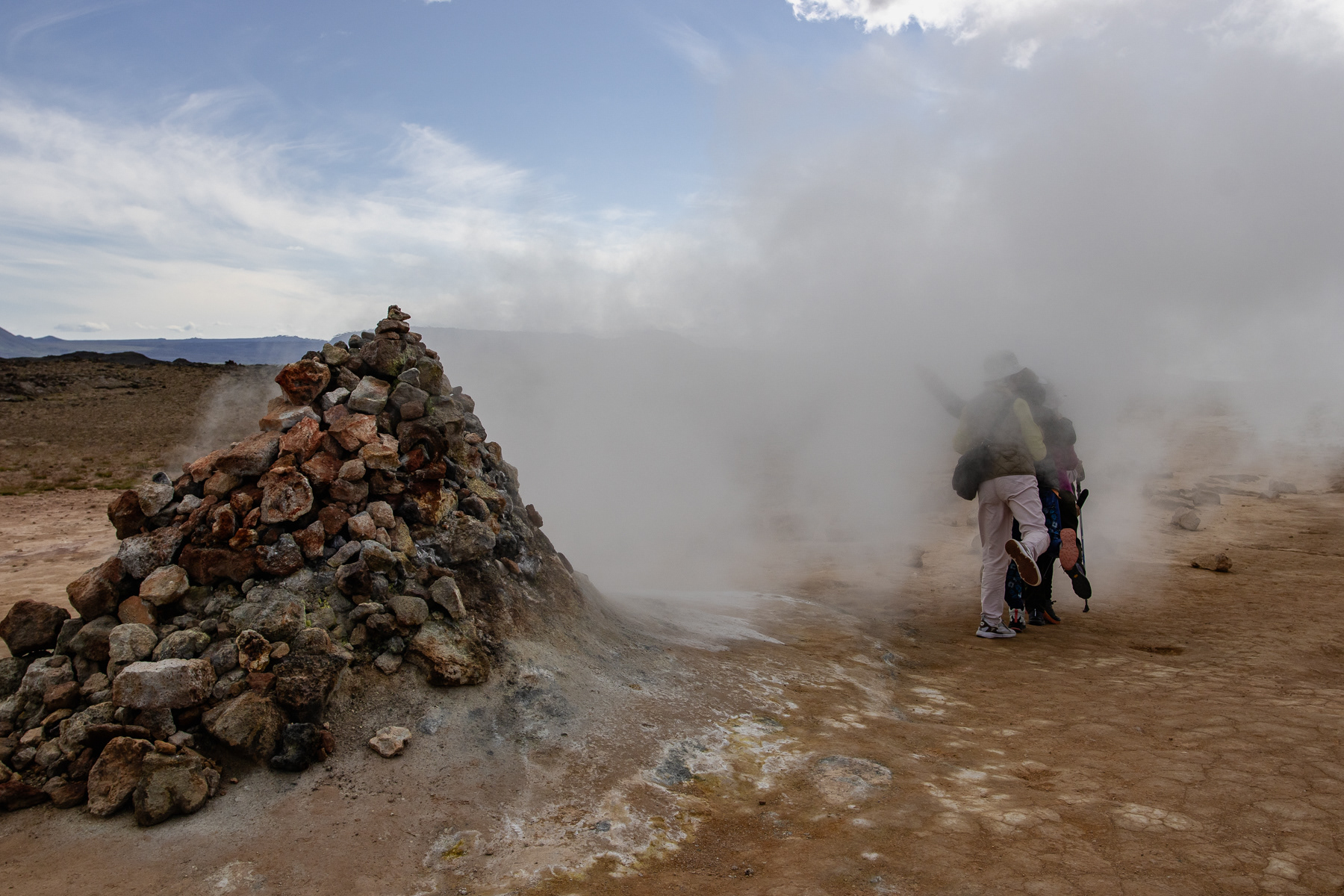
A rare moment, catching a single visitor against the backdrop of the lower hills at Hverir.
Unless you come early, this is the normal routine on a sunny day at Hverir.


